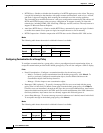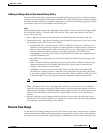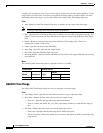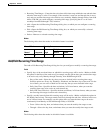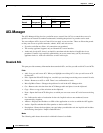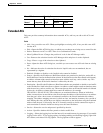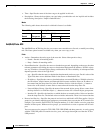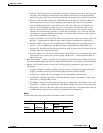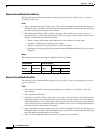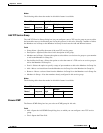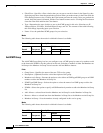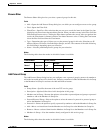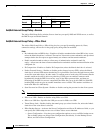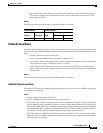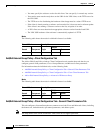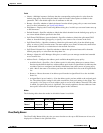
35-18
Cisco ASDM User Guide
OL-16647-01
Chapter 35 General
ACL Manager
Browse Source/Destination Address
The Browse Source or Destination Address dialog box lets you select an object to use a s a source or
destination for this rule.
Fields
• Type—Determines the type of object to use as the source or destination for this rule. Selections are
IP Address Objects, IP Names, Network Object Groups, and All. The contents of the table following
this field change, depending upon your selection.
• Source/Destination Object Table—Displays the objects from which you can select a source or
destination object. If you select All in the type field, each category of object appears under its own
heading. The table has the following headings:
–
Name—Displays the network name (which may be an IP address) for each object.
–
IP address—Displays the IP address of each object.
–
Netmask—Displays the network mask to use with each object.
–
Description—Displays the description entered in the Add/Edit/Paste Extended Access List Rule
dialog box.
Modes
The following table shows the modes in which this feature is available:
Browse Source/Destination Port
The Browse Source or Destination Port dialog box lets you select a source or destination port for this
protocol in this rule.
Fields
• Add—Opens the Add TCP Service Group dialog box, on which you can configure a new TCP
service group.
• Find—Opens the Filter field.
• Filter/Clear—Specifies a filter criterion that you can use to search for items in the Name list, thus
displaying only those items that match that criterion. When you make an entry in the Filter field, the
Filter button becomes active. Clicking the Filter button performs the search. After you perform the
search, the Filter button is dimmed, and the Clear button becomes active. Clicking the Clear button
clears the filter field and dims the Clear button.
• Type—Determines the type of object to use as the source or destination for this rule. Selections are
IP Address Objects, IP Names, Network Object Groups, and All. The contents of the table following
this field change, depending upon your selection.
• Name—Lists the predefined protocols and service groups for your selection.
Firewall Mode Security Context
Routed Transparent Single
Multiple
Context System
• — • ——



